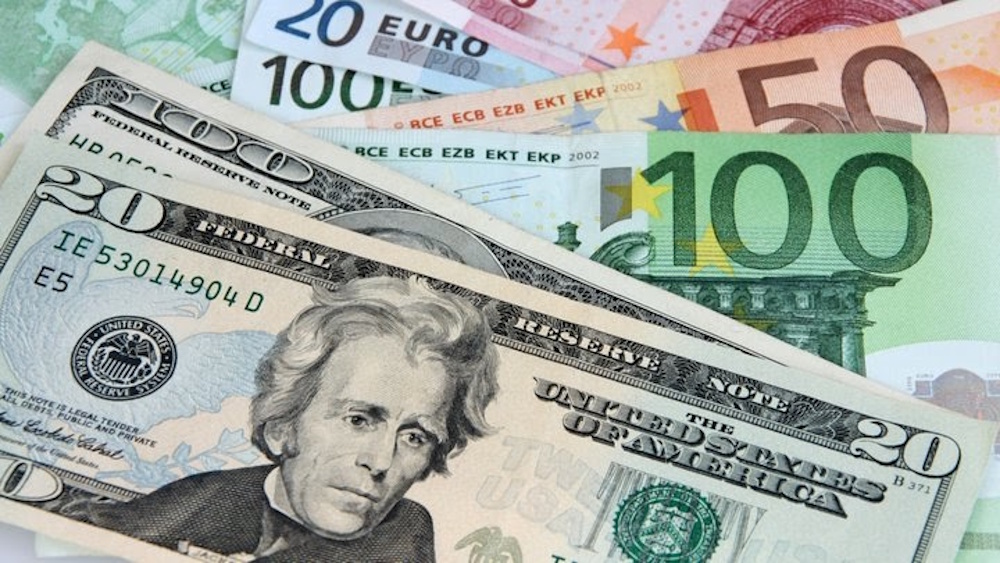The EUR/USD pair maintained stability near 1.1620, continuing its tight trading range for the fourth session in a row as market participants weighed dovish Federal Reserve expectations against a backdrop of cautious sentiment in Europe. The euro received slight support following comments from José Luis Escrivá, who expressed confidence that interest rates are “appropriately set,” thereby indicating that further tightening is unlikely at this time. In the meantime, enhanced risk sentiment stemming from U.S.–China trade developments contributed to the upward movement of risk assets, resulting in an increase in European equities and a temporary depreciation of the dollar. Both sides of the Atlantic are approaching significant events this week that have the potential to alter the trajectory of the pair—most notably the Federal Reserve’s meeting on October 29 and the ECB’s monetary policy statement.
Recent inflation data has validated the easing of price pressures in the United States. In September, the headline CPI experienced a modest increase of 0.3%, maintaining the annual rate at 3.0%, which is slightly under the anticipated 3.1% rate. The core CPI increased by 0.2% month-on-month, representing its slowest growth rate in more than a year. The recent softness has solidified expectations for a 25-basis-point Fed rate cut, which is currently priced at almost a 98% probability. Treasury yields declined as investors shifted their focus to higher-risk assets. Concurrently, the resurgence of optimism regarding a U.S.–China trade framework—suspending 100% tariffs and easing rare-earth export restrictions—bolstered global sentiment. Treasury Secretary Scott Bessent characterized the agreement as “substantial progress,” noting that “no new tariffs are planned.” The recent developments have caused the U.S. Dollar Index to retreat to approximately 105.80, representing a slight pullback from the previous week’s high of 106.40.
More robust than anticipated Eurozone PMI readings offered temporary support for the euro, suggesting that regional activity could be stabilizing following several months of contraction. Nonetheless, inflation throughout the bloc continues to be restrained, providing the ECB with minimal motivation to change its existing position. This week, the release of the German IFO Business Climate data is anticipated by traders, who are looking for new insights into the resilience of the industrial sector following a year marked by underperformance. Escrivá’s remarks that “rates are appropriately positioned” highlighted the ECB’s prudent stance, indicating that there will be no swift shift towards easing despite the Fed’s plans to reduce rates. The divergence in policy may limit the potential for EUR/USD to rise beyond the 1.1680–1.1740 range, particularly if the Fed adopts a tone that is less dovish than what the markets expect. The EUR/USD pair remains in a consolidation phase, oscillating between 1.1580 and 1.1680, a range that has been prevalent since mid-October. The 20- and 50-period EMAs are positioned around 1.1620 and 1.1645, creating a close grouping that indicates a lack of consensus. A daily close above 1.1650 would reveal 1.1684, subsequently leading to the 1.1737 Fibonacci retracement zone, where previous highs from early October align. On the downside, support holds steady at 1.1580, with a secondary level at 1.1539, which represents the month’s low.
Momentum indicators present a neutral to mildly constructive outlook: the RSI hovering around 51 indicates a slight bullish bias, whereas the MACD reveals a flattening of negative momentum—suggesting that sellers may be losing their grip. However, a failure to maintain levels above 1.1645 poses a risk of the pair retreating toward 1.1570–1.1550, an area where buyers have historically supported the euro. The upcoming 72 hours could be critical in determining the short-term trajectory. The Federal Reserve is anticipated to implement a quarter-point rate cut, representing its second consecutive decrease. The market’s attention will be directed towards Chair Powell’s statement—any reluctance to endorse a dovish trajectory may lead to a resurgence in dollar strength. In Europe, political tensions in France are re-emerging as the Socialist Party deliberates a no-confidence motion regarding proposed tax reforms, which could potentially disrupt investor confidence at a time when the euro is striving for stabilization. Meanwhile, the current U.S. government shutdown is causing delays in the release of important data, such as durable goods and housing figures, which diminishes near-term clarity for dollar positioning. The upcoming Trump–Xi meeting in South Korea later this week is set to be a pivotal moment, as both leaders are anticipated to formalize the trade framework. Markets are poised for a symbolic “handshake deal” aimed at reinforcing easing tensions.
Data indicates that speculative accounts have been reducing net euro shorts for the second consecutive week, cutting bearish exposure by approximately 8,500 contracts, marking the largest weekly shift since July. The implied volatility in EUR/USD options has decreased to an 11-month low, indicating a sense of complacency in the market, even with the impending event risk on the horizon. The current tranquility may dissipate rapidly should the Fed or ECB present unexpected developments to the markets. Cross-asset flows indicate a moderate risk-on sentiment—European equities increased by 0.6%, and S&P 500 futures advanced by 0.9%, implying that investors are aligning themselves with expectations of dovish policy outcomes. Meanwhile, Treasury yields at 4.02% and a softening dollar index support the short-term outlook for euro strength. The fundamental landscape continues to exhibit a delicate equilibrium. Weaker U.S. inflation and positive trade sentiment suggest a decline in the dollar’s strength, whereas ongoing stagnation in the eurozone and political instability limit the potential for sustained rallies in the euro. Should EUR/USD surpass 1.1680 on a closing basis, the momentum may propel it towards 1.1730–1.1750, thereby confirming a near-term breakout. Nevertheless, a resurgence in the dollar or an unexpected hawkish stance from the Fed could drive the pair down past 1.1580, thereby reintroducing the potential for 1.1539 and perhaps 1.1470. In the medium term, the contrast between a Fed that is cutting rates and an ECB that remains unchanged presents asymmetric upside potential for the euro once U.S. easing is fully realized.

